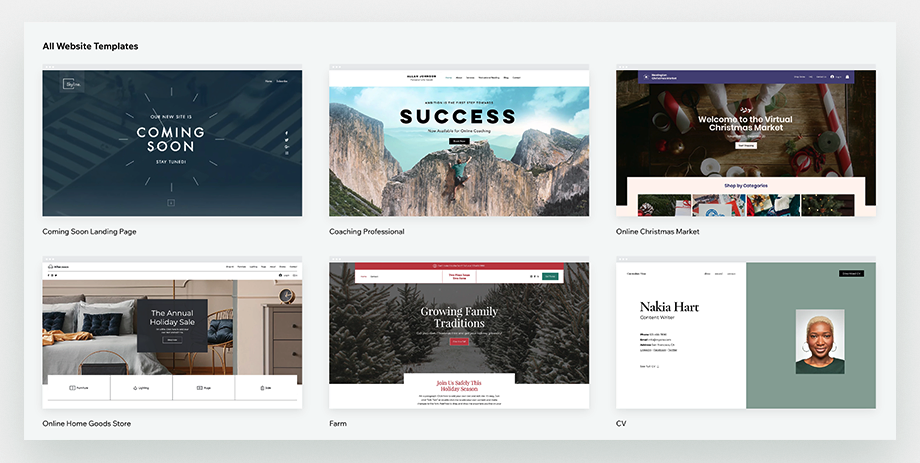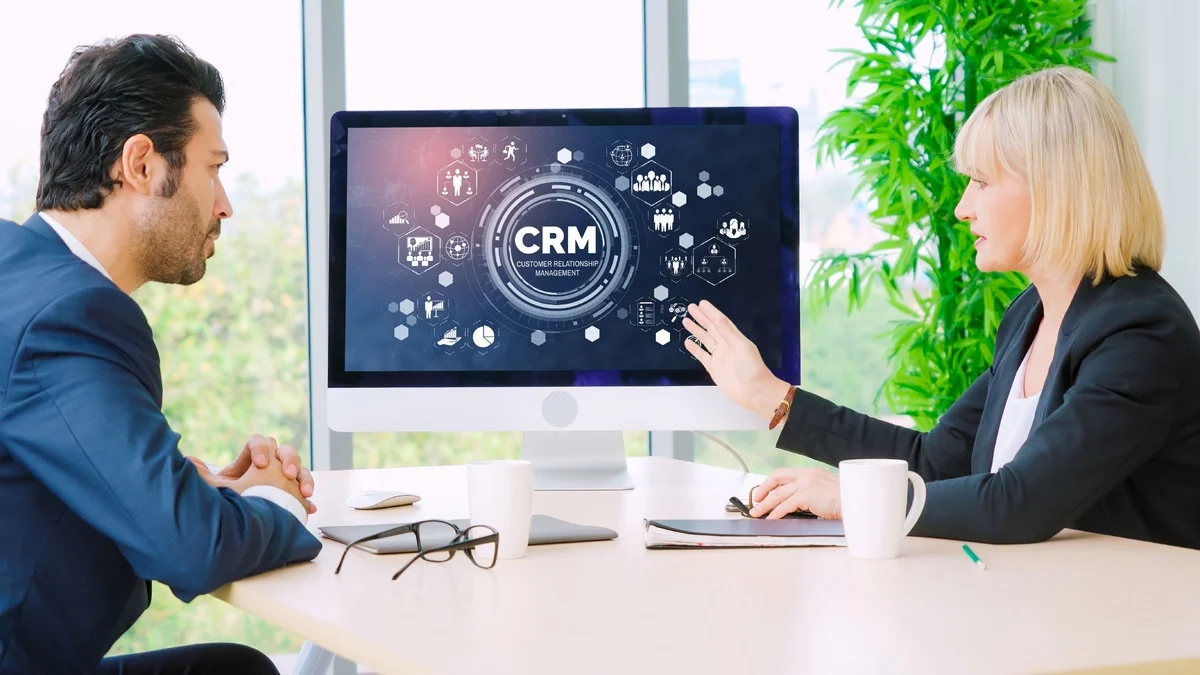Having a strong online presence is the most important thing in today’s digital landscape.
A website can be one of your most effective sales and marketing tools, to help people easily discover your business. While starting a website might sound intimidating as a small business, you can actually start a website with a relatively low operation cost, even as low as 5$ per month.
So, in this guide, we’ll walk you through the steps to create a website that is affordable and easy to implement for a small business owner that might have minimal technical knowledge.
1. Get to Know the Platform for Building your Website
The initial step in building your website is to familiarise yourself with the platform you’ll be using.
WordPress is a popular choice due to its user-friendly interface and extensive customisation options. Furthermore, there are numerous other options available, such as Wix or Squarespace, which also offer a plethora of features.
When selecting the platform to build your website, there are several factors you should consider to tailor it to your needs. These factors include the level of customisation options available, how user-friendly the platform is, and the availability of themes and plugins to help you achieve the professional-look of your website.
These three elements are crucial considerations when exploring website building platforms, especially for a small business. Choosing the right platform can make building a website easy, even if you don’t have any coding or technical experience.
2. Choose Your Domain Name
A domain name serves as an address for individuals to visit your website. While you have the freedom to choose any name you desire, it is advisable to select one that aligns with your business or professional identity.
Branding plays a crucial role in business, thus it is essential to opt for a domain name that reflects the message you aim to convey. This may include aspects such as the products you sell, the target audience you wish to reach, or the unique selling proposition of your products or services.
Other than 3 things that we mentioned above, here are some other important tips to consider when choosing your domain name:
- Keep it short and easy to remember: It is advisable to limit your domain name to two words for optimal memorability.
- Reflect your brand: Incorporate elements such as the products you sell or the target audience you wish to reach to accurately represent your brand.
- Avoid hyphens and numbers: While it is possible to include numbers if they align with your branding, it is generally recommended to avoid them for the sake of creating an easily memorable domain name.
- Consider using keywords: Including keywords relevant to your business can further enhance the memorability of your domain name.
- Check your domain availability: Most website builders or domain providers offer tools to check the availability of a desired domain name.
- Choose the right domain extension: The most common domain extensions or top-level domains for businesses are .com or .net. However, if you are targeting a local audience, consider domains like .com.au or .au.
Remember, you can’t change your domain name after you choose it! So be mindful about it. Also if you are looking to target Australian audiences only, you can check our tips on how to create a website for business in Australia.
3. Buy Your Domain Name and Register it to Hosting Provider
Now that you’ve already chosen your domain name, the next step is to purchase hosting through a provider and then register your domain with it.
Hosting providers typically cost between 4 to 9$ per month, so make sure to select one that fits your budget. There are several hosting provider options available, such as domain.com or bluehost.com.
We have an article that breaks down on how much does it cost to develop a website in Australia. You can check out that article to learn the details about the cost.
At this stage, you might feel a bit overwhelmed by the process, but let us simplify it for you.
Hosting essentially serves as the platform for registering your domain name. After you have chosen the domain name, you need to purchase hosting and then register your website name with the hosting provider. Then, the last step will be designing your website.
In the past, this process involved multiple applications and platforms. Imagine having to visit different shops for each step. This means you would need to purchase a domain from domain shops, link it to hosting through hosting providers, and then order a website design from design shops.
However, there are all-in-one options available nowadays. These options are suitable for those with minimal or no coding experience.
Some examples of such platforms are WordPress, Squarespace, or Wix. These platforms provide domain registration, hosting, and user-friendly “drag-and-drop” tools for website design all in a single payment.
When you’re picking a hosting provider, try to find one that gives you extras like around-the-clock support, a free domain name, and especially an SSL certificate. An SSL certificate is super important for websites nowadays. Not only does it make your site secure, but it also makes search engines like it more.
4. Start Designing Your Website and Adding Content
Congratulations! You now have an active website. However, the interface may not look as you desired, and you may lack the necessary content to introduce your business to people on the internet.
The next step is to design your website and add content to it.
The Australian government’s business body offers several tips for designing your website. First, understand your customers and how they will use your website. Second, make your website accessible. Third, ensure your website is mobile-friendly.
For adding content to your website, Forbes also provides useful tips to give you ideas about what content your business website should have.
- Landing Page: This is the first page users interact with. It should directly inform users about what you do and whom you serve. When designing the landing page, consider using striking graphics, a large and readable font for the headline, a clear & concise description of your product, and an engaging call to action.
- About Us Page: Share the story of your business. Include information such as what you do, why you started, causes you support, and how you conduct your business.
- Transactional Page: If you offer services, consider creating a “Contact Us” page to guide users to the next step after learning about your services through the content. If you sell products, you can include a shopping page using a platform like WooCommerce that can easily integrate with website builders like WordPress.
- Detailed FAQ Page: Many users seek information when they visit a website. Make sure you provide them with all the needed information through a detailed FAQ page. This page offers users the general information they need about your business.
5. Optimise your Site for Search Engines
Now that your website is active, has content for the internet, and has been polished with design, the next step is to optimise it for search engines.
SEO practices might seem overwhelming at first, especially if you don’t have a technical background. However, at its core, you only need to pay attention to these three things:
- Optimising your website speed: You can achieve this by using compressed images or more efficient image formats like .JPG or .WEBP.
- Linking between pages: Connect your landing page to any other page and content that you create.
- Including search queries in your website content: You can incorporate them in headlines or descriptions on your landing page or any other content.
If you are using WordPress for your website builder, there are plenty of SEO plugins available. Yoast SEO is one of the plugins commonly used by most people.

6. Publish your Website
Your website is practically ready to publish if you have followed all the steps above. Before you hit publish, make sure to review several things to ensure that your business website looks good.
Among many things, make sure that:
- You have proofread all your written content to ensure it is accurate and error-free.
- Check the layout and images of your website to ensure they are properly placed and use optimised images for fast loading.
- Test your website across different browsers such as Chrome, Firefox, and Safari to ensure it runs properly. Also, double-check your website design on both PC/Laptop and mobile devices.
7. Keep Your Website Fresh and Maintain Regularly
The job isn’t finished once you hit publish on your website. Regular maintenance is required by ensuring that your website content stays up-to-date, secure, and continues to attract visitors.
After publishing, you need to inform search engines that your website is online and can be crawled by them. Additionally, it’s important to track the number of visitors to your website.
The first step is to connect your website to some of Google’s services. To assist Google in crawling your website easily, connect your web with Google Search Console. Then, to track visitors, you’ll need Google Analytics.
There are WordPress plugins available that make it easy to integrate your website with both services. However, even without these plugins, Google provides easy-to-follow step-by-step guides for integrating your website with Search Console and Analytics.
Once you’ve set up your website for your small business, the last thing to do is to keep it fresh.
Consider adding a blog section where you can inform users about your latest products or promotional offers. Additionally, keep users updated with your business growth on your website, as it’s one of the channels where users can learn about your business.
Conclusion
That’s all you need to know about how to build a website for a small business. It may seem overwhelming at the start, but we trust that you will gradually get into the flow by following these steps.
If you are still considering building a website, make sure to check out our article on 10 reasons and importance of a website for small businesses in 2024.
We understand that creating a website may seem intimidating for small businesses. That’s why Nexa Lab offers customised solutions for businesses of any size.
We provide the best web app development services that ensure your scalability and performance, with comprehensive testing and quality assurance, with security and compliance in mind, as well as provide you with maintenance and support.Develop your website with Nexa Lab now!




